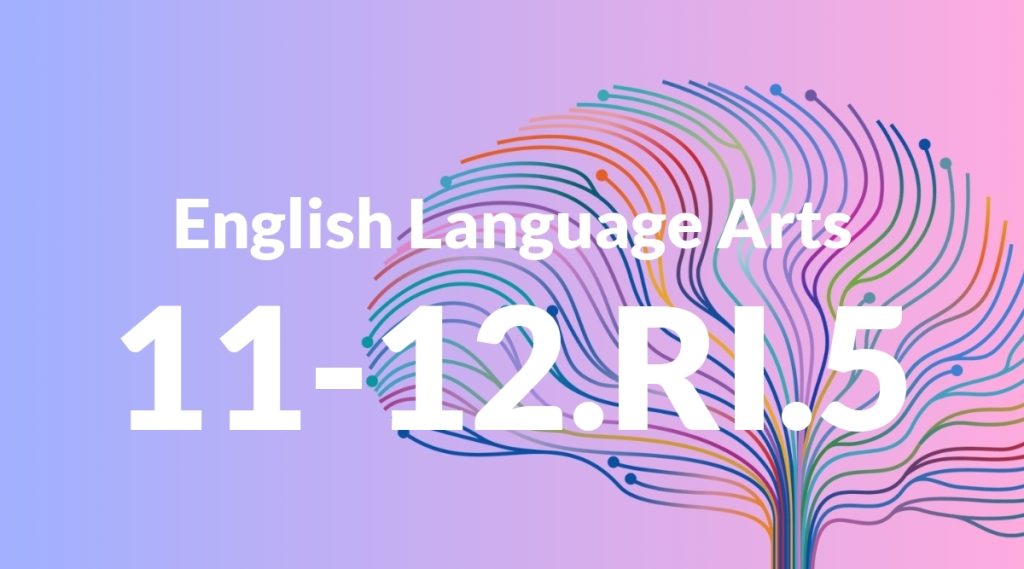Standard: 11-12.RI.5 – Analyze and evaluate the effectiveness of the structure an author uses in his or her exposition or argument, including whether the structure makes points clear, convincing, and engaging.
Grade level: Grade 11-12
Subject: English Language Arts
Domain: Reading: Informational Text
Teacher Overview
This standard focuses on students’ ability to analyze and evaluate the structure of informational texts. It is critical for developing advanced critical thinking and analytical skills, preparing students for college-level reading and writing. Students should be familiar with different text structures and be able to identify main ideas and supporting details.
Students will develop the ability to create well-structured arguments and critically engage with complex texts in various contexts.
Common Misconception 1
Some students may think that any structured text is inherently effective. This is incorrect because the effectiveness of a text’s structure depends on how well it achieves clarity, coherence, and engagement.
Intervention 1
Use rubrics and specific criteria to help students evaluate texts based on clarity, coherence, and engagement.
Common Misconception 2
Some students may overlook the impact of authorial intent on text structure. This is incorrect because an author’s purpose and audience significantly influence how a text is structured.
Intervention 2
Have students analyze texts with different purposes and audiences to understand how these factors shape the text’s structure.
Prerequisite Knowledge
Students should have a foundational understanding of basic text structures (e.g., cause/effect, problem/solution) and be able to identify main ideas and supporting details in informational texts.
Subsequent Knowledge
After mastering this standard, students will be able to craft their own well-structured arguments and expositions, and critically engage with complex texts in both academic and real-world contexts.
Instructional Activities
- Group discussions on the structure of various informational texts
- Individual analysis of news articles and essays
- Peer review sessions focusing on text structure
- Writing assignments that require students to structure their arguments effectively
- Interactive workshops on evaluating text clarity and engagement




